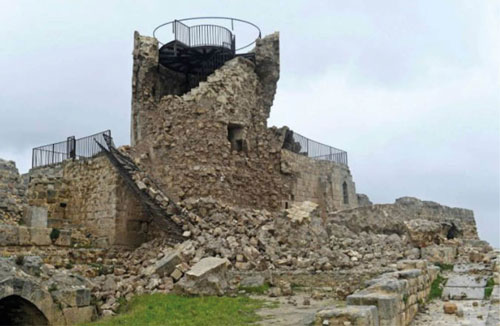The UN’s cultural agency Unesco said two sites listed on its World Heritage list in Syria and Turkiye sustained damage in the devastating earthquake and warned several others may also have been hit.
The earthquake early on Monday affected one of the longest continuously-inhabited areas on the planet within the so-called Fertile Crescent, which has witnessed the emergence of different civilisations from the Hittites to the Ottomans.
This rich history has left behind a plethora of archeological sites — many of them thousands of years old — which have been major tourist attractions for decades.
As well as the damage to the old city of Syria’s Aleppo and the fortress in the southeastern Turkish city of Diyar-bakir, Unesco said at least three other World Heritage sites could be affected including the famous archaeological site Nemrut Dag.
“Our organisation will provide assistance within its mandate,” said Unesco Director General Audrey Azoulay.
A statement from Unesco said it and partners had already carried out an initial survey of the damage of the quake.
It said it was “particularly concerned” about the old city of Aleppo, which has been on its list of World Heritage in Danger since 2013 due to the Syrian civil war.
“Significant damage has been noted in the citadel. The western tower of the old city wall has collapsed and several buildings in the souks have been weakened,” it said.
Aleppo was Syria’s pre-war commercial hub and considered one of the world’s longest continuously inhabited cities, boasting markets, mosques, caravanserais, and public baths.
But a brutal siege imposed on rebels by government forces left it disfigured. Syria’s directorate of antiquities had already raised concern about the damage on Wednesday, saying parts of Aleppo’s northern defensive walls had collapsed.
In Turkiye, Unesco said it was saddened by the “collapse of several buildings” at the World Heritage site of the Diyarbakir Fortress and the adjacent Hevsel Gardens.
It emphasised that the entire area was an important centre of the Roman, Sassanid, Byzantine, Islamic and Ottoman periods.
The pre-dawn quake hit near Gaziantep in southeastern Turkiye at a depth of about 18 kilometres, the US Geological Survey said.
Social media posts showed that the 2,200 year old castle built by Roman armies that soars above Gaziantep had collapsed in the quake, its walls partially turned to ruins.
It is not among the 19 sites in Turkiye currently inscribed on Unesco’s World Heritage list.
“The human cost is heartbreaking. We are also deeply saddened by the damage to cultural heritage sites in Turkiye and Syria,” said the NGO Blue Shield International which monitors the protection of heritage sites around the world.
With weather conditions and the remote nature of the areas making access and information hard to come by, Unesco said other sites in Turkiye on the World Heritage list not far from the epicentre could be affected.
It said these included the famed neolithic site of Gobekli Tepe in Sanliurfa province, home to the world’s oldest known megaliths some 10,000 years old.
Unesco is also concerned about the Nemrut Dag site, one of Turkiye’s most iconic attractions due to the giant statues that are part of an ancient royal tomb erected high on a mountain, it said.
The third site is the neo-Hittite archaeological site of Arslantepe outside Malatya, a city also badly hit by the earth-quake.
“Unesco is mobilising its experts, to establish a precise inventory of the damage with the aim of rapidly securing and stabilising these sites,” it said.—AFP










